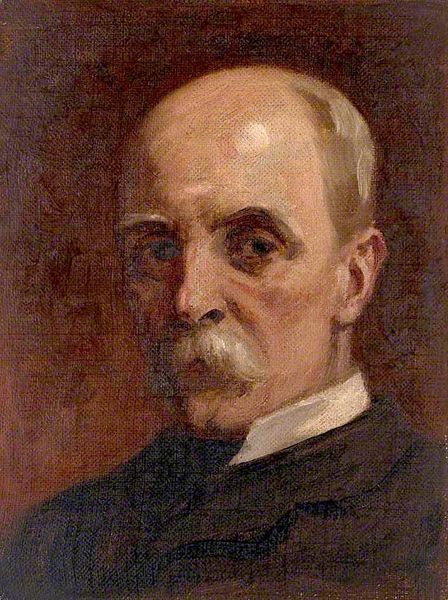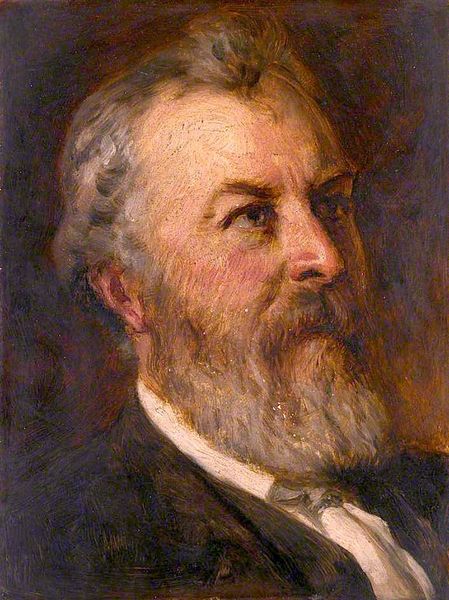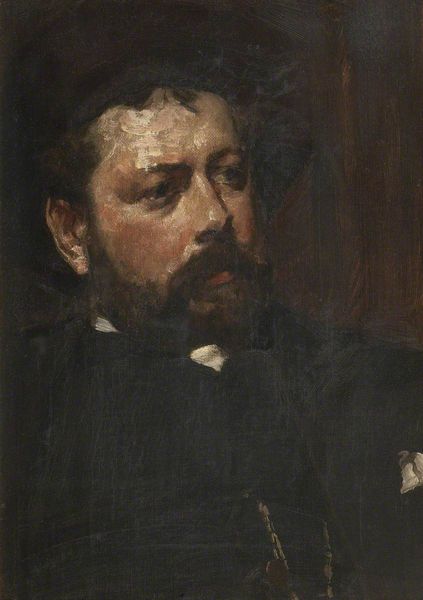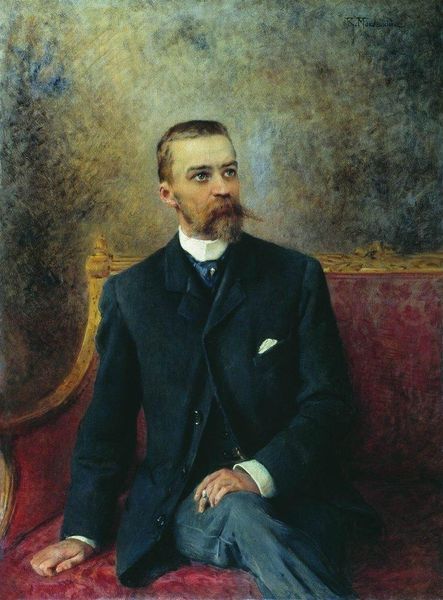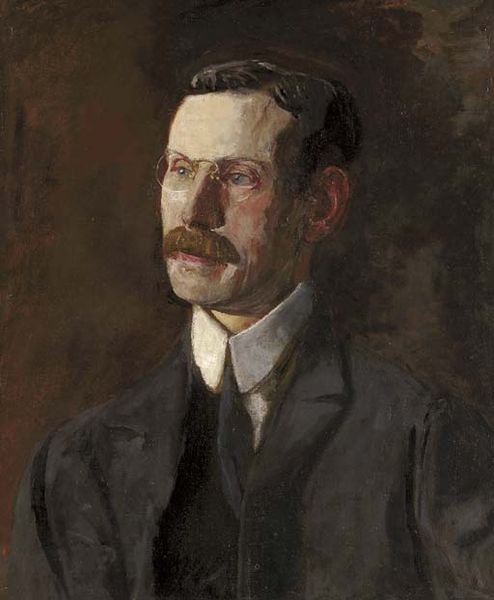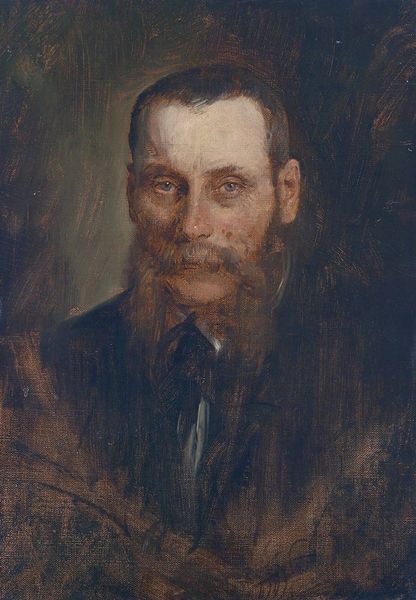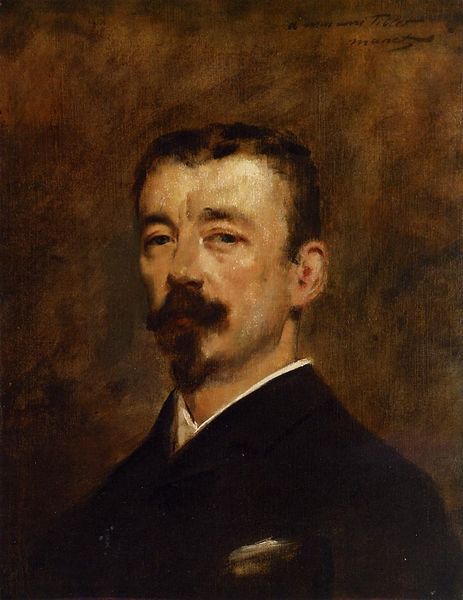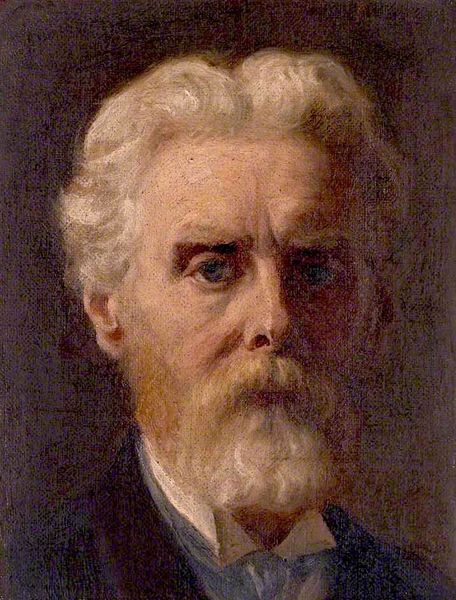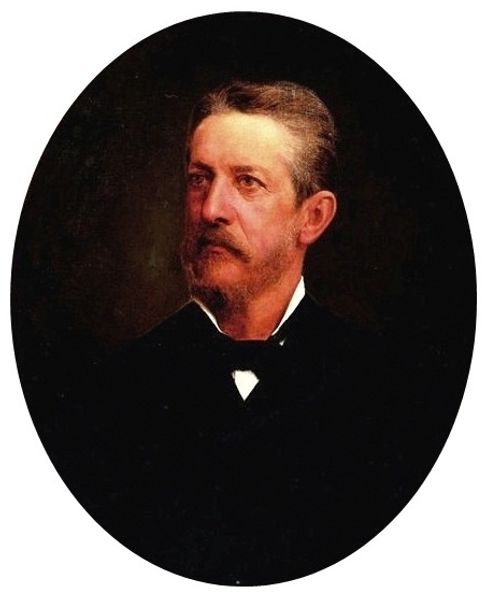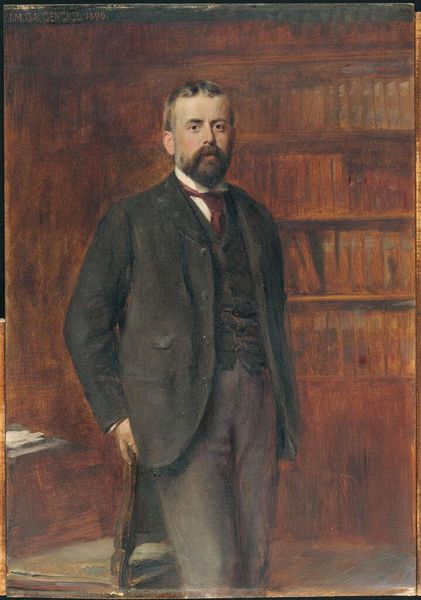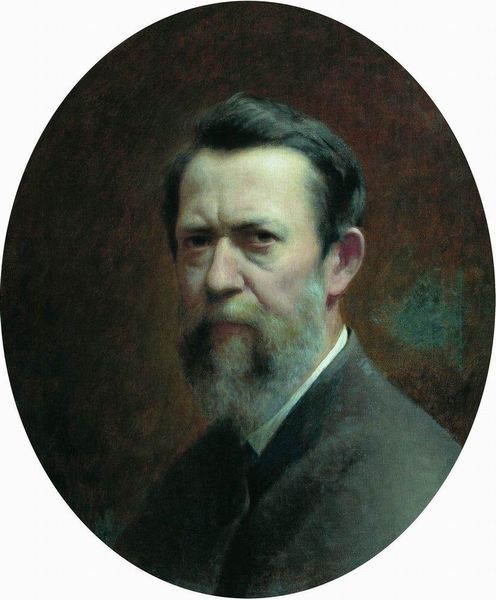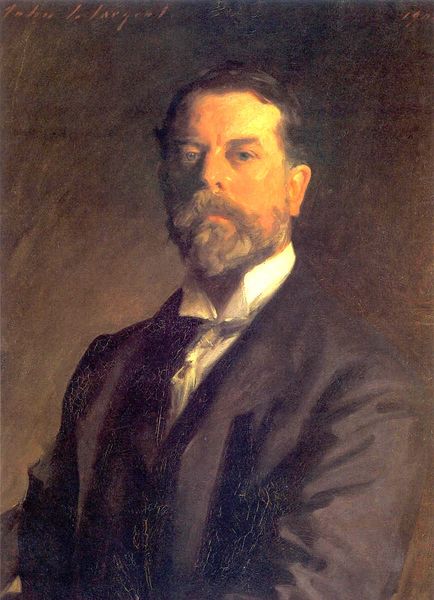
painting, oil-paint
#
portrait
#
portrait
#
painting
#
oil-paint
#
academic-art
#
realism
Copyright: Public domain
Editor: Here we have James Archer's portrait of *William Ewart Lockhart, Artist,* painted in 1891 using oil paint. What strikes me is the formality of the composition and the intensity of the subject’s gaze. What can you tell me about its historical context? Curator: Absolutely. Looking at it through a historical lens, these portraits of artists were often acts of institution building in themselves. Think about the Royal Scottish Academy. Portraits, like this one, would hang there, publicly declaring an artist's affiliation, respectability, and skill. Consider the implied power structures: Who is being memorialized? Whose gaze mattered? Editor: So, the painting wasn’t just about likeness; it was a form of cultural capital? Curator: Precisely. Archer, also a prominent artist within these circles, positions Lockhart in a way that affirms the values of academic art and realism. Think of it as subtle art world politics playing out on canvas. Look at his bow tie! Is it subtly saying that Lockhart can relax because he has already won the fame game? Editor: That's a completely different way to look at what at first seemed a straightforward portrait! So much of the artist's status in the art world can be communicated and confirmed with just an image like this. Curator: Exactly. The artwork shows its subject’s position within a hierarchy, it isn't just someone's face but their reputation on public display. Next time you see a portrait in a museum, ask yourself, what does it tell me about art institutions and power? Editor: I definitely will. This was super insightful – thanks!
Comments
No comments
Be the first to comment and join the conversation on the ultimate creative platform.

